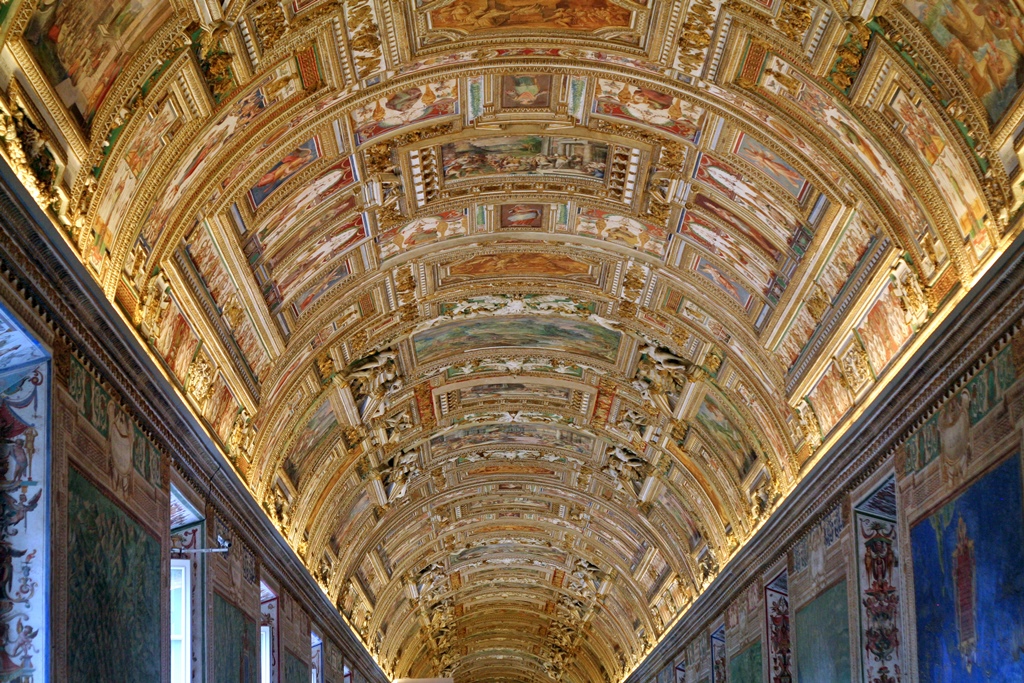Strictly speaking, Vatican City isn't part of Rome, or even part of Italy. It's a tiny
(110-acre) independent country which happens to be surrounded on all sides by Rome. It was
established long ago in its present location on the west side of the Tiber because this is
thought to be the spot where the "First Pope", St. Peter, was crucified and entombed in the
first Century A.D. During the many centuries during which Italy was broken up into several
city-states, this location was part of the Papal States, and represented its center of
government. When Italy was reunified in the late 19th Century, the status of the area was
somewhat in limbo, until the Lateran Treaty was signed in 1929 (by Prime Minister Benito
Mussolini, acting for king Victor Emmanuel III), establishing Vatican City as an independent
country. Vatican City is completely surrounded by walls or buildings (except for the main
road into the city, Via della Conciliazione), and is the only absolute monarchy in
Europe (the monarch being the Pope).
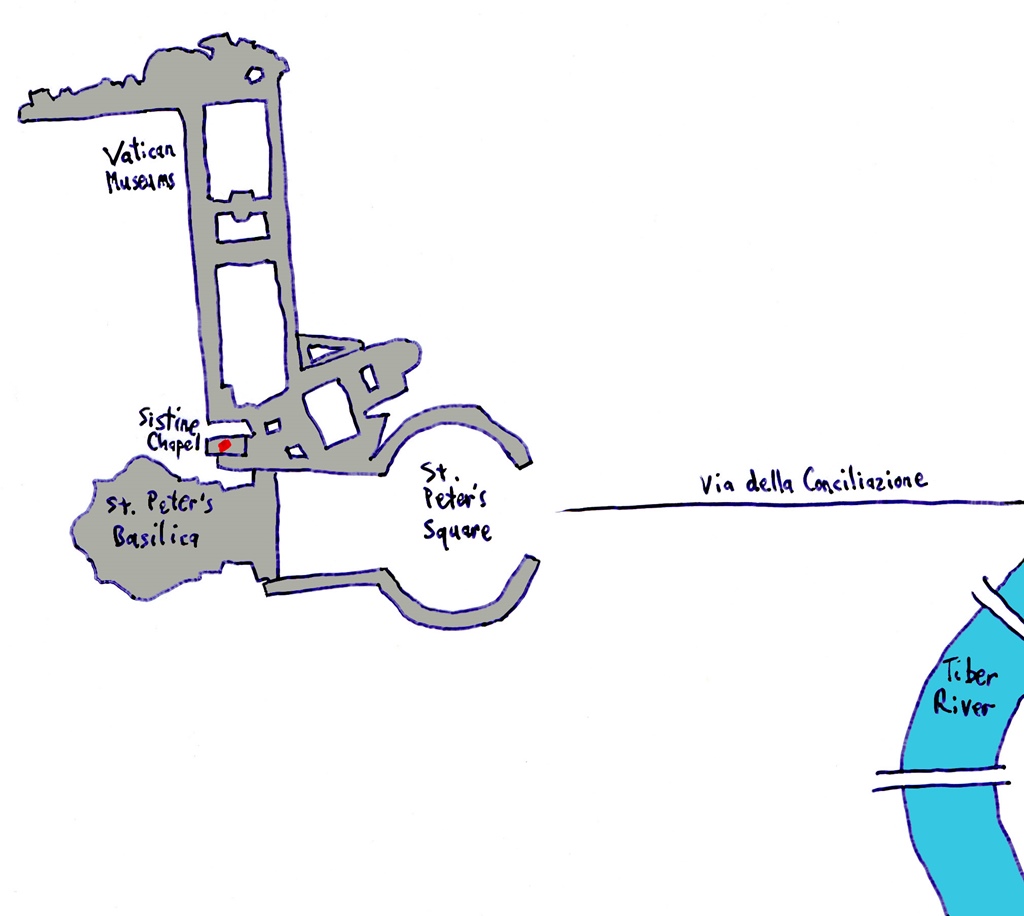
Vatican Attractions on the Map
The first place we wanted to visit in Vatican City was the Vatican Museums, located on the
north edge of the city, and we approached from that direction. There is a Metro stop within
walking distance of the Museums, but our apartment wasn't near a Metro stop, so instead we
caught a bus at a road along the Tiber which got us close. In the area around the Vatican
Museums, there is a big wall along the Vatican City border, which we found and then followed
to the Museums. On approaching the Museums, it was impossible to miss the long line of
people waiting to buy tickets.
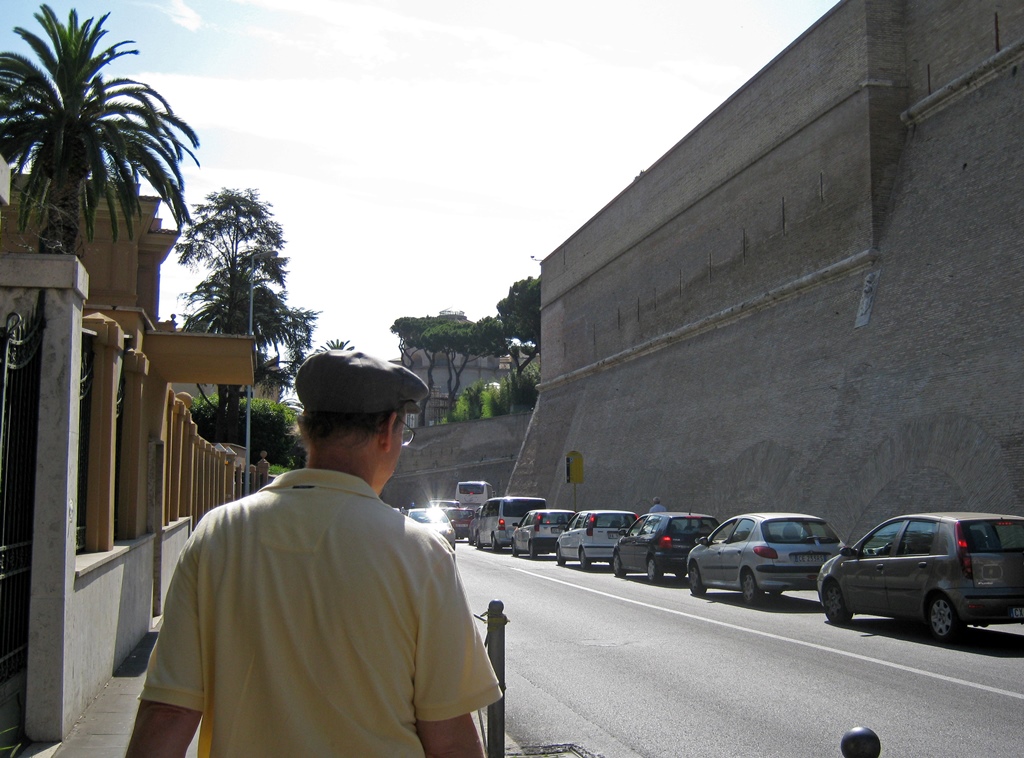
Following the Wall

The Queue
Entrance
The Vatican Museums are not included in the Roma Pass, but we'd done some Internet
research in advance and found that you could buy tickets on the Internet for a particular
date and time. Which we did. We walked past the line of people and entered at the group
sales entrance. We had to wait in a short line to show our confirmation, but after that
we were in.
The Vatican Museums represent one of the great museum complexes in the world. It's
technically arranged as a collection of smaller museums, but everything's connected, so
it might be more natural to think of it as one big museum. There are areas of
concentration on particular subjects, either adjacent to each other or connected by long
galleries, and there are recommended routes for seeing everything.
Ceiling, Gallery of the Maps

Ceiling Detail, Gallery of the Maps
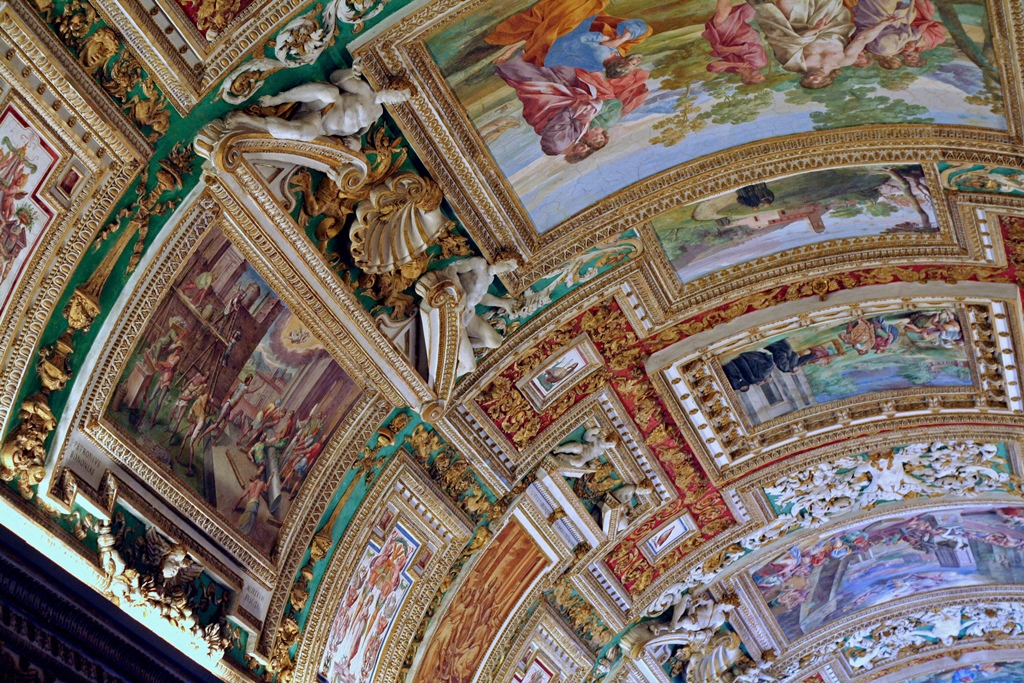
Ceiling, Gallery of the Maps
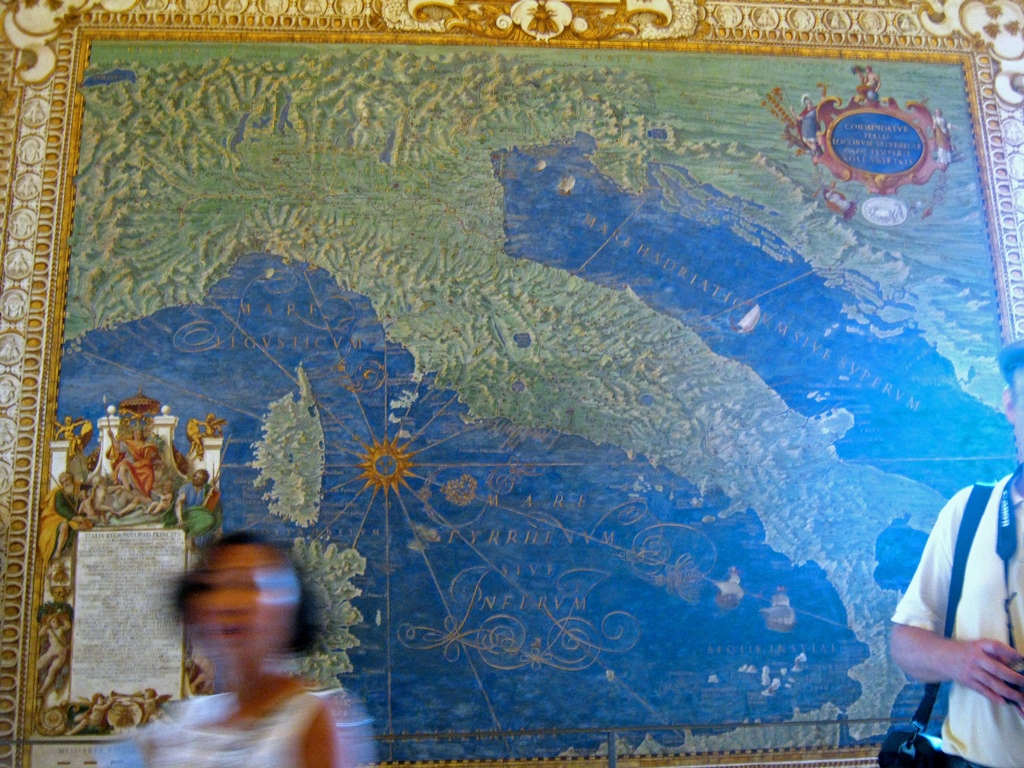
Nella and Italy Map

Gallery of the Maps
There is a large courtyard surrounded by some of the galleries, called the Cortile della Pigna,
named after a gigantic first or second Century bronze pinecone located at one end.

Cortile della Pigna

Overview, Cortile della Pigna
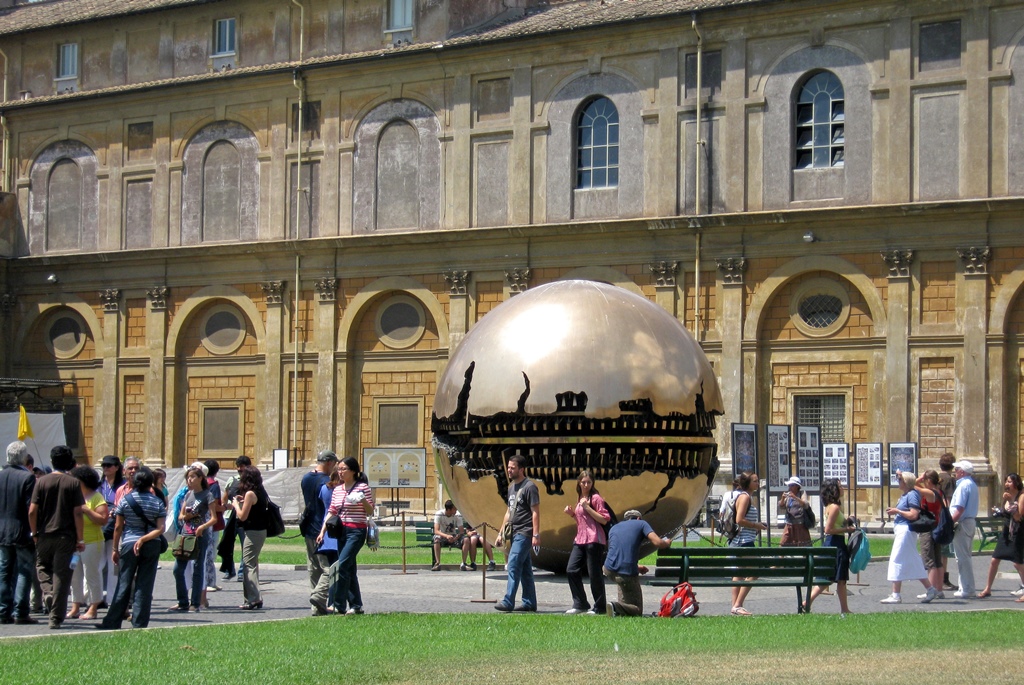
Sphere Within Sphere, Arnaldo Pomodoro

Nella and Connie in Courtyard

Alcove with Giant Pinecone

Giant Pinecone
During our visit, nearly all of the indoor space was compacted with bodies of tourists,
probably common for the tourist season. On the last Sunday of each month, admission is
free. On such days the crowding is no doubt increased, and it's difficult to image how
anyone is able to move.

Crowd, Gallery of the Candelabra

Sistine Hall
Spiral Ramp
The collection of the Vatican Museums is too big and varied to treat properly as a single page,
so it's been broken up here into multiple pages. First, we'll look at some paintings.





